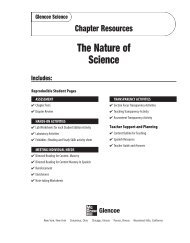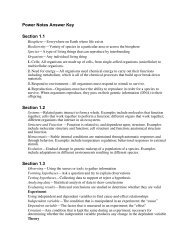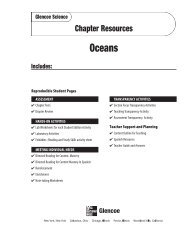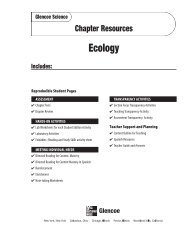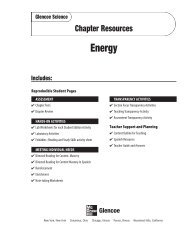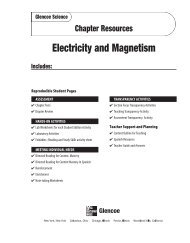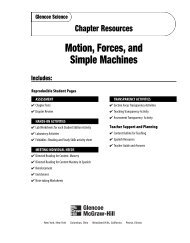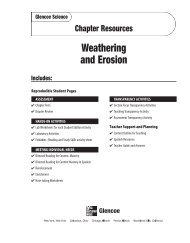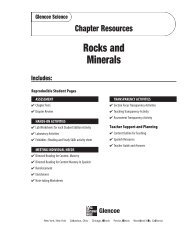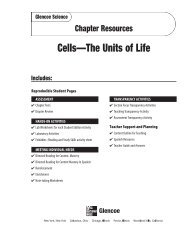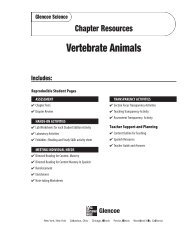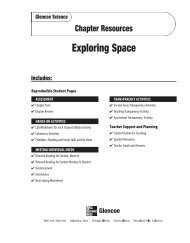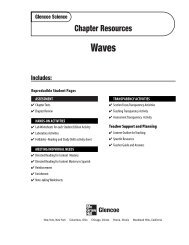Content Outline for Teaching - Potosi School District - Home
Content Outline for Teaching - Potosi School District - Home
Content Outline for Teaching - Potosi School District - Home
Create successful ePaper yourself
Turn your PDF publications into a flip-book with our unique Google optimized e-Paper software.
5<br />
Section 2<br />
<strong>Content</strong> <strong>Outline</strong><br />
<strong>for</strong> <strong>Teaching</strong><br />
Newton’s Laws of Motion<br />
Motion, Forces, and<br />
Simple Machines<br />
Underlined words and<br />
phrases are to be filled<br />
in by students on the<br />
Note-taking Worksheet.<br />
A. Force—a push or a pull<br />
1. When a <strong>for</strong>ce acts on an object, it changes the object’s acceleration.<br />
2. Two or more <strong>for</strong>ces that cancel each other out are balanced <strong>for</strong>ces.<br />
3. Two or more <strong>for</strong>ces that do not cancel each other out are unbalanced <strong>for</strong>ces.<br />
4. The combination of all <strong>for</strong>ces acting on an object is the net <strong>for</strong>ce.<br />
B. Newton’s laws of motion—explain how <strong>for</strong>ces cause motion<br />
1. Newton’s first law—a moving object moves in a straight line with constant<br />
speed unless a <strong>for</strong>ce acts on it.<br />
a. Friction—a <strong>for</strong>ce that resists movement between two surfaces in contact<br />
b. An object’s tendency to resist a change in motion is inertia; the more mass<br />
an object has, the greater its inertia.<br />
2. Newton’s second law—if an object is acted upon by a net <strong>for</strong>ce, the change in<br />
velocity will be in the direction of the net <strong>for</strong>ce; acceleration can be calculated<br />
as acceleration equals net <strong>for</strong>ce divided by mass.<br />
3. Newton’s third law—<strong>for</strong>ces always occur in equal but opposite pairs; the equal<br />
and opposite <strong>for</strong>ces act on different objects, so they are not balanced <strong>for</strong>ces.<br />
Discussion Question<br />
How are mass and inertia related? The greater an object’s mass, the greater its<br />
inertia.<br />
Motion, Forces, and Simple Machines 15




